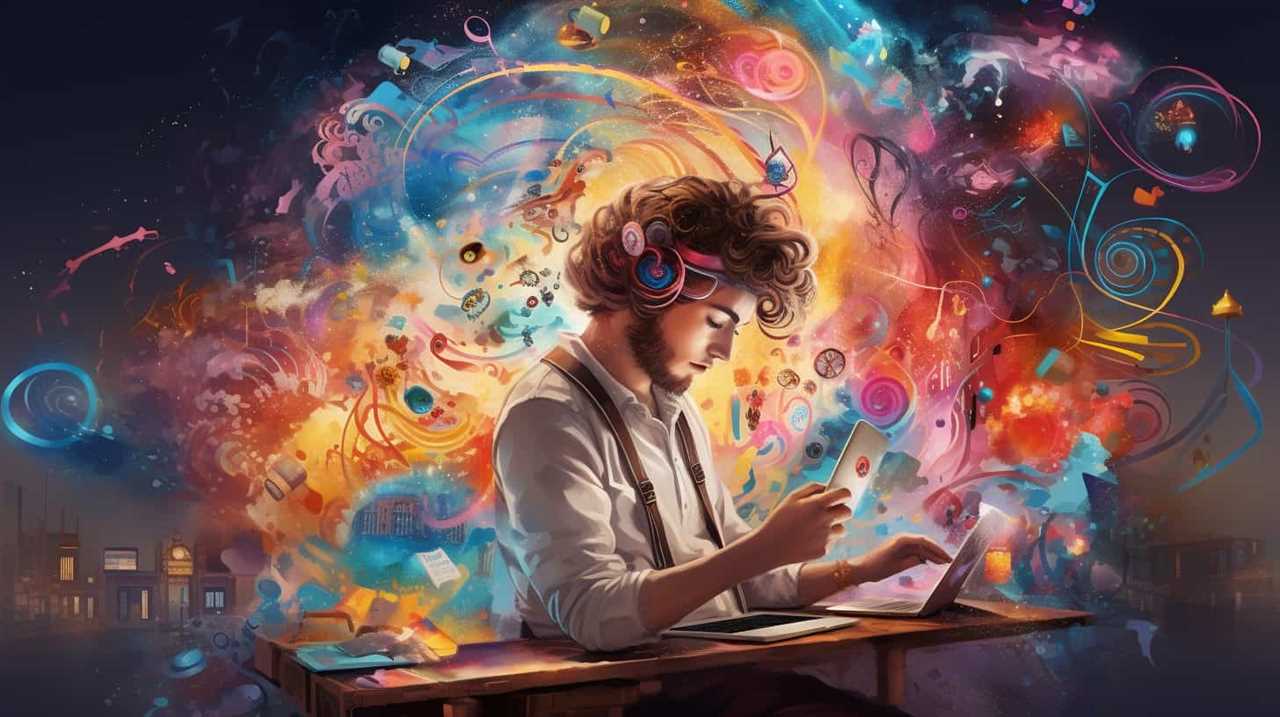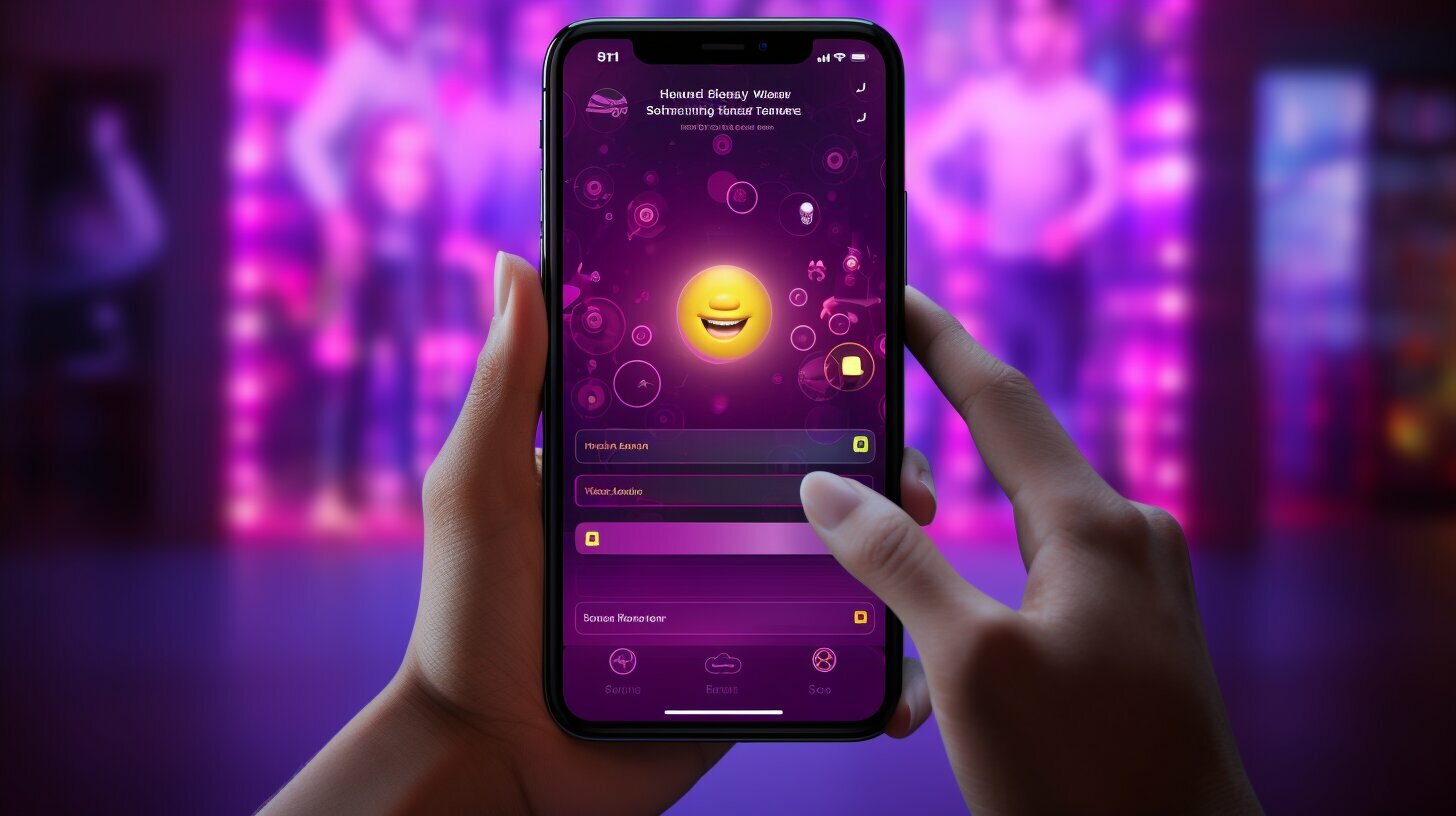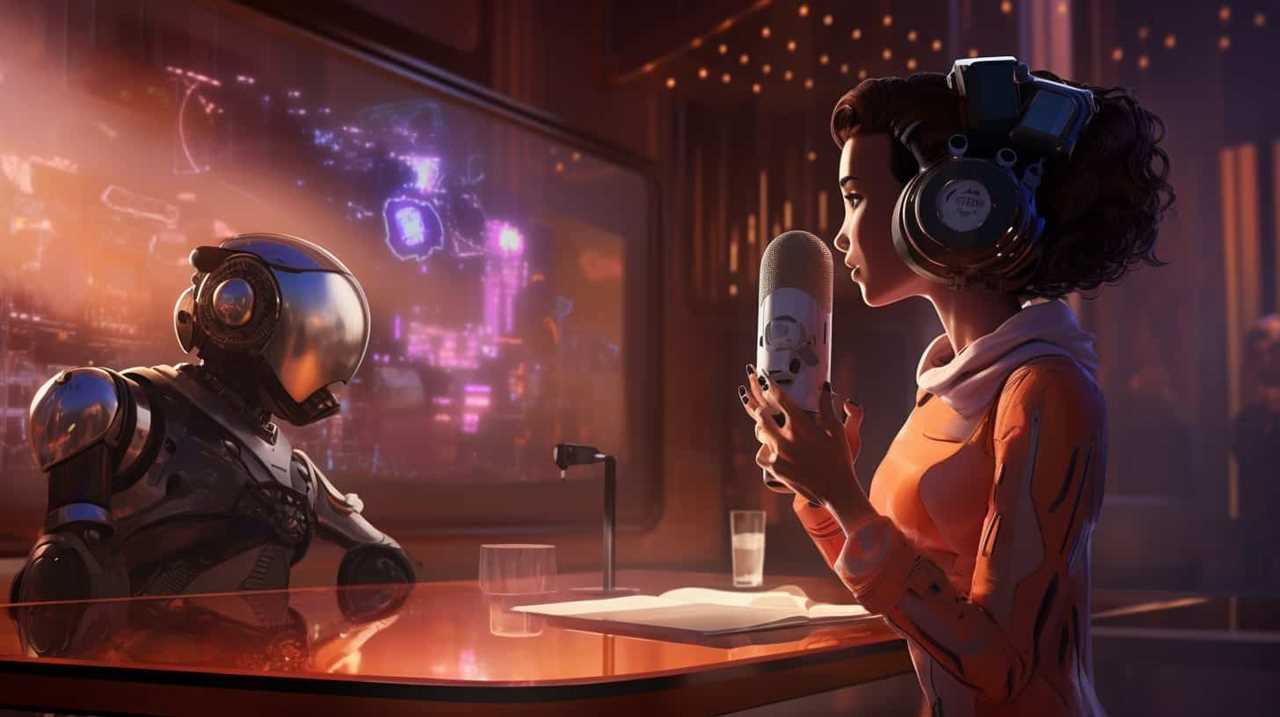Get prepared, folks, for an exceptional reveal. Be prepared to witness the amazing fusion of art and technology as we explore the 13 incredible ways in which generative AI is revolutionizing the world of artistic creations.
From elevating visual effects to redefining character design, this cutting-edge technology is reshaping the very fabric of creativity.
Join us on this thrilling journey as we delve into the limitless possibilities of generative AI, and witness the birth of a new era in artistic innovation.
Key Takeaways
- Generative AI automates special effects, saving time and resources for artists.
- It revolutionizes virtual reality by enhancing immersive experiences and improving character animation.
- Generative AI transforms motion graphics into dynamic and captivating visual experiences, allowing for personalized and interactive content.
- It enhances storytelling and creates immersive narratives in cinema, allowing for personalized and interactive viewing experiences.
Enhancing Visual Effects
One of the ways generative AI transforms artistic applications is by enhancing visual effects using its advanced algorithms and capabilities. By automating special effects, generative AI can revolutionize the way artistic expression is achieved.
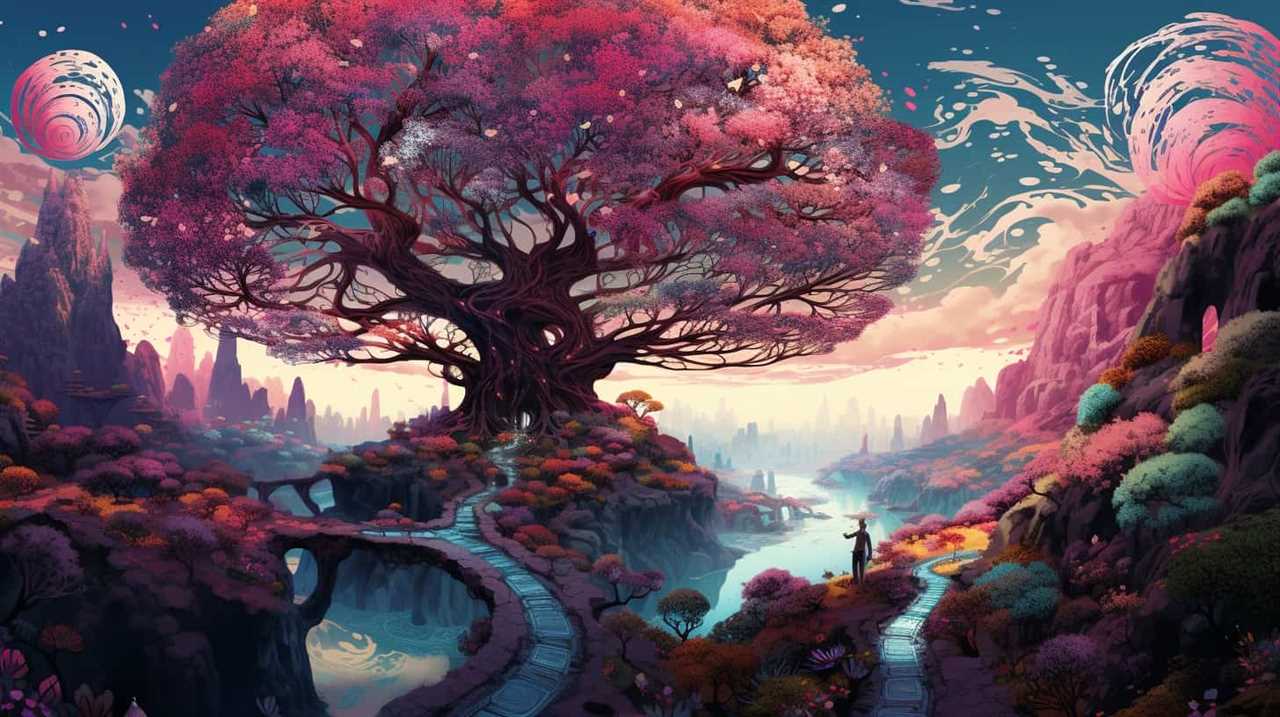
Through its intricate algorithms, generative AI can analyze and interpret visual data, enabling it to generate stunning and realistic visual effects that were once only possible through complex manual processes. This automation not only saves time and resources but also allows artists to explore new creative possibilities.
Generative AI’s ability to transform artistic expression through enhanced visual effects opens up a realm of innovation and imagination. Artists can now push boundaries, create immersive worlds, and captivate audiences like never before.
The seamless integration of generative AI into artistic applications truly revolutionizes the way visual effects are achieved, transforming the art industry.
Redefining Character Design
As we delve into the topic of redefining character design, we can see how generative AI continues to push the boundaries of artistic expression and revolutionize the way characters are brought to life.
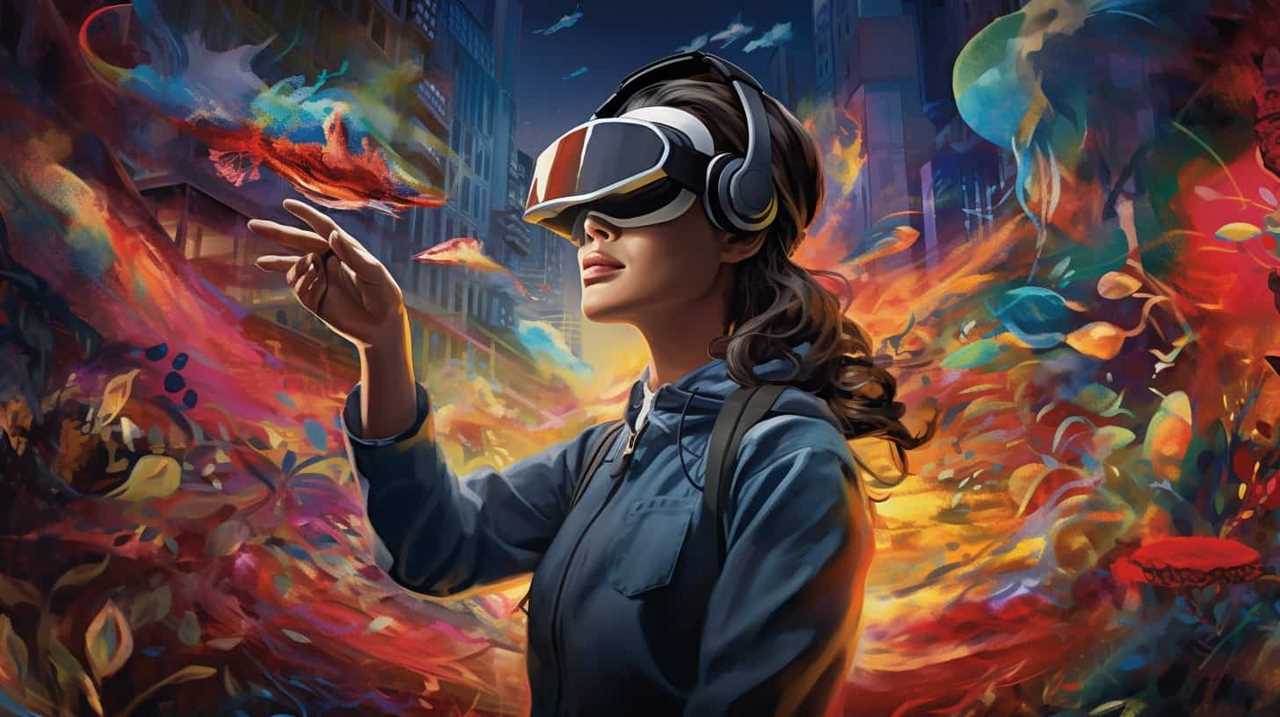
Character development is a crucial aspect of storytelling, and generative AI offers innovative tools to enhance this process. By analyzing vast amounts of data, generative AI algorithms can generate unique and diverse characters that captivate audiences.
These algorithms have the capability to understand visual aesthetics and create characters that align with specific styles and narratives. Whether it’s creating realistic human characters or fantastical creatures, generative AI provides artists with new possibilities to explore and expand their creative horizons.
With generative AI, character design becomes a collaborative endeavor between human creativity and machine intelligence, resulting in visually stunning and emotionally compelling characters.
Revolutionizing Virtual Reality
When it comes to revolutionizing virtual reality, generative AI has proven to be a game-changer. By harnessing the power of AI, immersive experiences can be greatly improved, allowing users to engage with virtual worlds in a more realistic and interactive way.

Generative AI enables the creation of highly detailed and lifelike virtual environments, enhancing the overall sense of presence and immersion for users. With generative AI, developers can create dynamic and evolving virtual worlds that respond to user inputs and actions, creating a truly interactive and personalized experience.
This technology also has the potential to revolutionize other aspects of virtual reality, such as character animation and procedural content generation. By using generative AI, developers can create more realistic and natural-looking characters, with lifelike movements and behaviors. This adds a new level of realism and believability to virtual reality experiences.
Improved Immersive Experiences
We frequently experience improved immersive experiences in virtual reality through the revolutionizing power of generative AI. This transformative technology has enabled the creation of realistic and dynamic virtual environments that engage our senses in unprecedented ways.
Generative AI algorithms enable the generation of immersive soundscapes that transport us to different worlds, enhancing the overall virtual reality experience. By leveraging AI, interactive sculptures can be dynamically created, allowing users to interact and manipulate virtual objects in real-time, adding a new level of interactivity and engagement.

These advancements in generative AI have revolutionized the way we experience virtual reality, pushing the boundaries of what’s possible in terms of immersion and interaction.
As we delve deeper into the topic of realistic virtual environments, we’ll explore how generative AI continues to shape the future of virtual reality.
Realistic Virtual Environments
Transforming virtual reality, generative AI revolutionizes artistic applications by creating realistic virtual environments. Through the power of immersive simulations and virtual world creation, generative AI enables artists and designers to push the boundaries of what is possible in virtual reality experiences.
One of the key advantages of generative AI in this context is its ability to generate vast and detailed virtual environments in a fraction of the time it would take using traditional methods. By leveraging algorithms and machine learning, generative AI can autonomously generate realistic landscapes, buildings, and objects, enhancing the overall immersion of virtual reality experiences.

To illustrate this, consider the following table showcasing the benefits of generative AI in the creation of realistic virtual environments:
| Benefits of Generative AI in Virtual World Creation |
|---|
| Faster creation of vast and detailed environments |
| Increased realism and immersion |
| Enables artists to focus on creativity and design |
Generative AI is revolutionizing virtual reality by empowering artists to create breathtaking and lifelike virtual environments, opening up endless possibilities for immersive experiences.
Automating Animation Creation
An incredible range of possibilities opens up when using generative AI to automate animation creation.
By automating character creation and streamlining animation workflows, generative AI can revolutionize the way animations are produced.

Traditionally, animators had to spend hours designing and animating characters from scratch, making the process time-consuming and labor-intensive.
However, with the power of generative AI, this process can be automated, allowing animators to focus more on the creative aspects of their work.
Generative AI algorithms can generate a wide variety of character designs, providing animators with a vast pool of options to choose from.
Furthermore, by streamlining animation workflows, generative AI can significantly reduce the time and effort required to create complex animations.
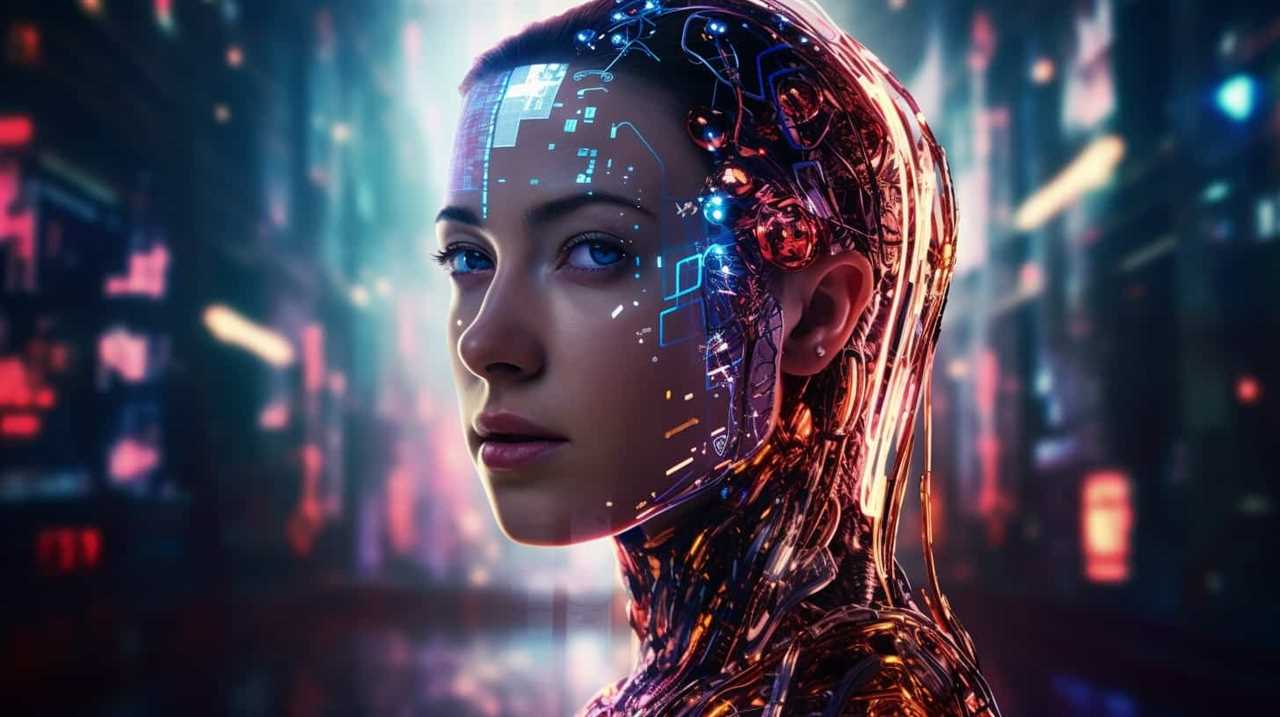
This not only improves efficiency but also enables animators to produce high-quality animations at a faster pace.
Transforming Motion Graphics
Transforming motion graphics through generative AI offers the potential for enhanced visual storytelling and automated animation generation.
By harnessing the power of AI algorithms, motion graphics can be transformed into dynamic and captivating visual experiences.
These advancements enable artists and designers to create compelling narratives and seamlessly integrate motion graphics into various mediums, revolutionizing the way we communicate and engage with visual content.
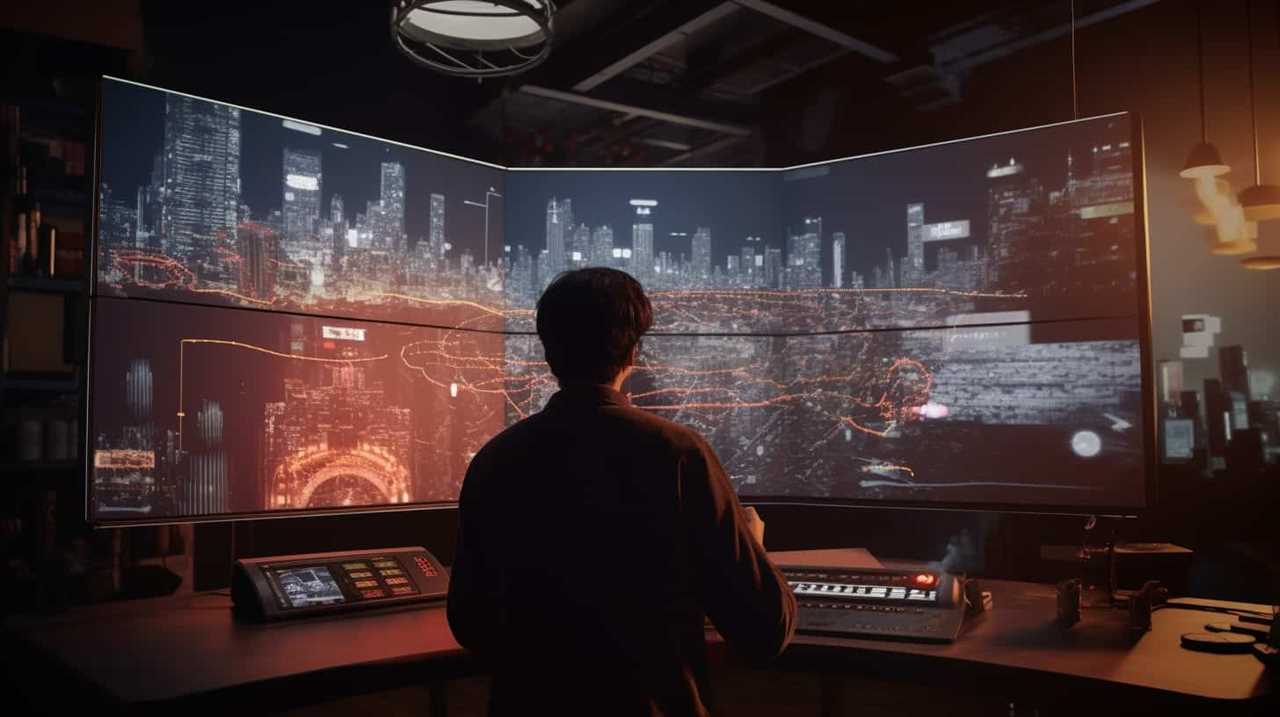
Enhanced Visual Storytelling
In our exploration of generative AI’s impact on artistic applications, we’ve witnessed how it has revolutionized the way we enhance visual storytelling through transforming motion graphics. With the rise of interactive exhibitions and augmented storytelling, generative AI has opened up new possibilities for creating immersive and engaging experiences.
By leveraging the power of AI algorithms, artists can now generate dynamic and personalized motion graphics that respond to user input in real-time. This interactive element adds a layer of interactivity and engagement to visual storytelling, allowing viewers to actively participate in the narrative.
Moreover, generative AI enables artists to experiment with different visual styles and aesthetics, pushing the boundaries of traditional motion graphics and creating visually stunning and captivating experiences.
As generative AI continues to advance, we can expect even more innovative and transformative applications in the realm of enhanced visual storytelling.

Automated Animation Generation
We continue to explore how generative AI transforms artistic applications by delving into the realm of automated animation generation, revolutionizing motion graphics.
With the advancements in AI technology, automated character creation has become seamless and efficient. Artists can now generate lifelike characters with intricate details, saving time and effort.
Moreover, AI-generated storylines have taken animation to new heights. By analyzing vast amounts of data, AI algorithms can create compelling narratives that resonate with audiences. This not only enhances the storytelling aspect but also provides endless possibilities for creativity.
Imagine a world where AI assists in developing captivating plotlines and engaging characters, freeing up artists to focus on other creative aspects.

The automated animation generation powered by AI is transforming motion graphics by streamlining the production process and pushing the boundaries of artistic expression.
Evolving Game Design
Evolving game design benefits from the integration of generative AI, enhancing our ability to create immersive and dynamic gaming experiences. By employing generative AI algorithms, game developers can explore new possibilities in evolving game mechanics, pushing the boundaries of traditional gameplay experiences.
Generative AI allows for the creation of procedurally generated worlds, characters, and quests, providing players with unique and unpredictable challenges. Through the analysis of player behavior and preferences, generative AI can adapt and evolve the game design in real-time, ensuring a personalized and engaging experience for each player.
Moreover, generative AI can assist in the creation of realistic and intelligent non-player characters, enhancing the overall immersion and interactivity of the game. By integrating generative AI into game design, we can revolutionize the way games are created, offering players innovative and captivating gameplay experiences.

Enriching Cinematic Experiences
By integrating generative AI into our cinematic experiences, we can enhance the storytelling and create immersive narratives that push the boundaries of traditional filmmaking. Generative AI technology enables interactive displays, allowing viewers to engage with the storyline in unprecedented ways.
Through interactive displays, users can explore different storylines, make choices, and influence the outcome of the film, creating a personalized and interactive viewing experience.
Additionally, generative AI can transform sound design by generating dynamic and adaptive soundtracks that respond to the viewer’s emotions and actions. This enhances the emotional impact of the film and creates a more immersive auditory experience.
With generative AI, filmmakers have the opportunity to revolutionize cinematic experiences, offering viewers a new level of interactivity and immersion.

Inspiring Digital Artistry
As we delve into the realm of inspiring digital artistry, generative AI opens up new possibilities for creating captivating and innovative works that push the boundaries of traditional artistic mediums. With the advancements in generative AI, digital painting techniques have greatly improved, allowing artists to achieve more realistic and visually stunning creations. By analyzing patterns and textures from existing artwork, generative AI algorithms can generate new brush strokes and color combinations, providing artists with fresh inspiration and enhancing their artistic skills.
Furthermore, generative AI is revolutionizing 3D modeling by automating complex tasks and streamlining the design process. Through machine learning algorithms, generative AI can analyze and learn from vast amounts of 3D models, allowing artists to quickly generate new and unique designs. This not only saves time but also encourages experimentation and innovation in the field of digital art.
In the following section, we’ll explore how generative AI reduces production time, enabling artists to bring their visions to life more efficiently and effectively.
Reducing Production Time
Continuing our exploration into inspiring digital artistry, generative AI significantly reduces production time by automating complex tasks and streamlining the design process. This technology is revolutionizing the way artists create and produce their work, bringing efficiency and speed to the forefront.

Here are five ways generative AI is improving efficiency and streamlining processes in artistic applications:
- Automated Rendering: Generative AI automates the rendering process, allowing artists to quickly visualize their ideas without the need for manual rendering.
- Rapid Iteration: Artists can explore multiple design variations in a short amount of time, enabling them to iterate and refine their work more efficiently.
- Asset Generation: Generative AI can generate high-quality assets, such as textures or 3D models, reducing the time spent on creating them manually.
- Intelligent Recommendations: AI algorithms can analyze vast amounts of data and provide artists with intelligent recommendations, helping them make informed design decisions faster.
- Time-saving Tools: Generative AI provides artists with time-saving tools like automatic color palettes, composition suggestions, and brush presets, allowing them to focus more on the creative process.
Generative AI is transforming artistic workflows, empowering artists to produce their best work in less time, and pushing the boundaries of innovation in the digital art world.
Innovating Storytelling Techniques
Generative AI revolutionizes storytelling techniques by enhancing our ability to create immersive and interactive narratives. This innovation is particularly evident in the realm of gamifying storytelling and creating interactive narratives.
With generative AI, storytellers can now engage audiences in a more dynamic and participatory way. By leveraging AI algorithms, creators can develop branching storylines that adapt to user choices, allowing for personalized experiences. This level of interactivity not only increases engagement but also enables users to become active participants in the storytelling process.

Generative AI also offers the potential to dynamically generate content based on user inputs, creating unique and ever-evolving narratives. With these advancements, storytelling is no longer a passive experience but an interactive journey that captivates and immerses audiences in a whole new way.
Personalizing User Interfaces
When it comes to personalizing user interfaces, there are several key points to consider.
First, customized UI experiences can greatly enhance user engagement by catering to individual preferences and needs. This can be achieved through adaptive layouts, personalized content recommendations, and customizable visual elements.
Additionally, tailored visual interactions can further improve the user experience by providing intuitive and seamless navigation, allowing users to effortlessly interact with the interface in a way that feels natural and personalized to them.
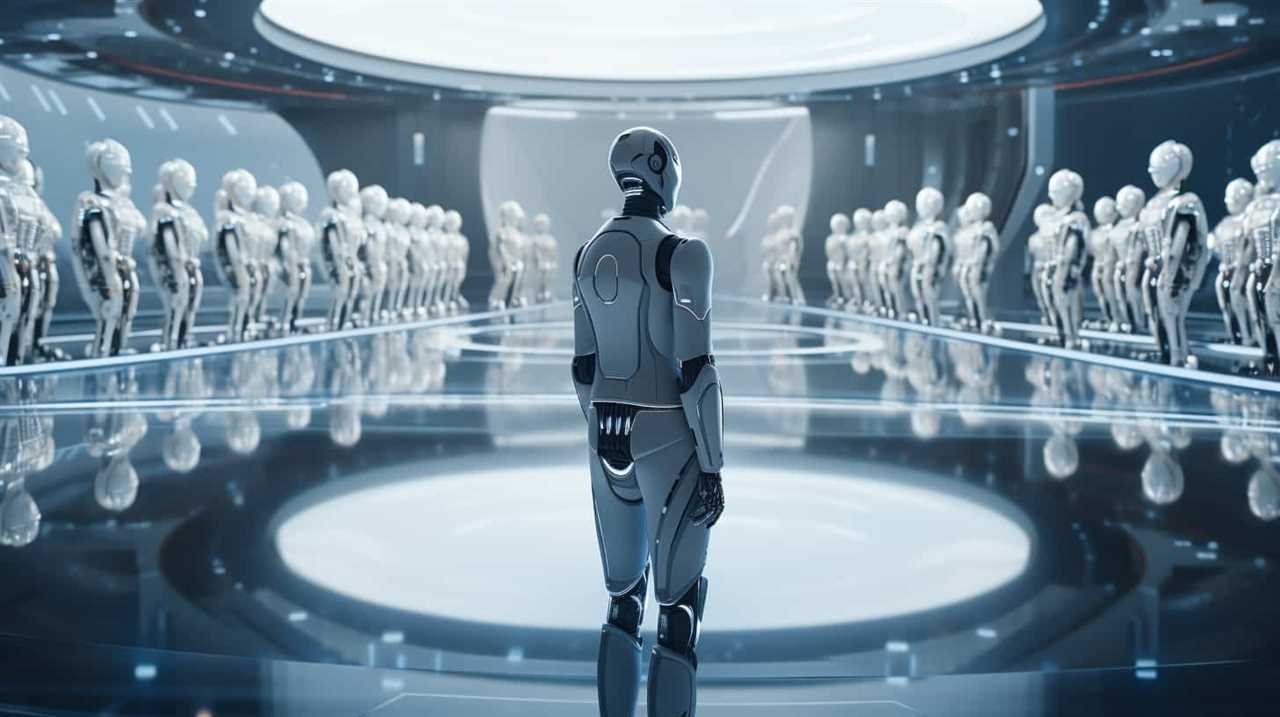
Customized UI Experiences
We enhance user experiences through the personalization of UI interfaces using generative AI. By leveraging customized UI interfaces and interactive design approaches, we’re able to create innovative and engaging user experiences.
Here are some ways in which generative AI transforms customized UI experiences:
- Adaptive layouts: Generative AI analyzes user behavior and preferences to dynamically adjust the layout of the UI, ensuring optimal usability and accessibility.
- Context-aware interactions: By understanding the context in which the user is interacting with the UI, generative AI can provide personalized recommendations and suggestions.
- Intelligent content organization: Generative AI algorithms categorize and organize content based on user preferences, making it easier for users to find what they’re looking for.
- Real-time customization: Through generative AI, UI interfaces can be customized in real-time based on user input, allowing for a truly personalized and tailored experience.
- Natural language interactions: Generative AI enables natural language processing, allowing users to interact with the UI using voice commands or text inputs.
With these advancements in customized UI experiences, we can now transition into the next section, discussing how generative AI enhances user engagement.
Enhanced User Engagement
To enhance user engagement, our team applies generative AI to personalize user interfaces and create immersive experiences. By leveraging the power of AI, we are able to provide users with personalized recommendations and interactive advertisements that cater to their individual preferences and interests. This level of customization not only enhances user satisfaction but also increases the effectiveness of advertisements by delivering content that is relevant and engaging. To showcase the impact of personalized user interfaces, we have created a table below, highlighting the emotional response evoked by this approach:

| Personalized Recommendations | Interactive Advertisements |
|---|---|
| Increased excitement and anticipation | Enhanced user interaction and engagement |
| Improved user satisfaction and loyalty | Higher click-through rates and conversions |
| Tailored content that resonates with users | Improved brand perception and recognition |
| Enhanced user experience and enjoyment | Increased revenue and profitability |
| Greater relevance and usefulness of recommendations | Deeper brand-user connections |
In the next section, we will discuss the importance of tailored visual interactions in further enhancing user engagement.
Tailored Visual Interactions
Our team leverages generative AI to personalize user interfaces and create tailored visual interactions that enhance user engagement. With this technology, we can revolutionize the way users interact with artistic applications.
Here are five ways in which tailored visual interactions transform the user experience:
- Personalized Artistry: Generative AI allows us to customize the visual elements of the user interface based on individual preferences, creating a unique and personalized experience for each user.
- Dynamic Adaptation: The interface dynamically adapts to user behavior and preferences, ensuring that the visual interactions are always relevant and engaging.
- Immersive Experiences: By leveraging generative AI, we can create interactive installations that respond to user inputs in real-time, providing a truly immersive and captivating experience.
- Emotional Connection: Tailored visual interactions evoke emotional responses from users, fostering a deeper connection with the artistic application.
- Enhanced User Engagement: Through personalized artistry and interactive installations, users are more likely to engage with the application for longer durations, resulting in increased satisfaction and enjoyment.
With these tailored visual interactions in place, we can now explore the next section: creating interactive installations.

Creating Interactive Installations
Through the utilization of generative AI, we can create captivating and immersive interactive installations. These installations merge technology with art to engage audiences in unique and transformative ways.
Interactive sculptures, enabled by generative AI, provide a multisensory experience as viewers can physically interact with the artwork. By incorporating sensors and motion tracking, these sculptures respond to touch, movement, and even sound, allowing viewers to actively participate and shape the artwork in real-time.
Additionally, generative AI enhances immersive performances by generating dynamic visuals and soundscapes that adapt to the performers’ actions and the audience’s responses. This creates a seamless integration between the performers and the technology, blurring the boundaries between the virtual and physical realms.
Through generative AI, interactive installations push the boundaries of artistic expression, offering a new paradigm for audience engagement and innovation in the art world.
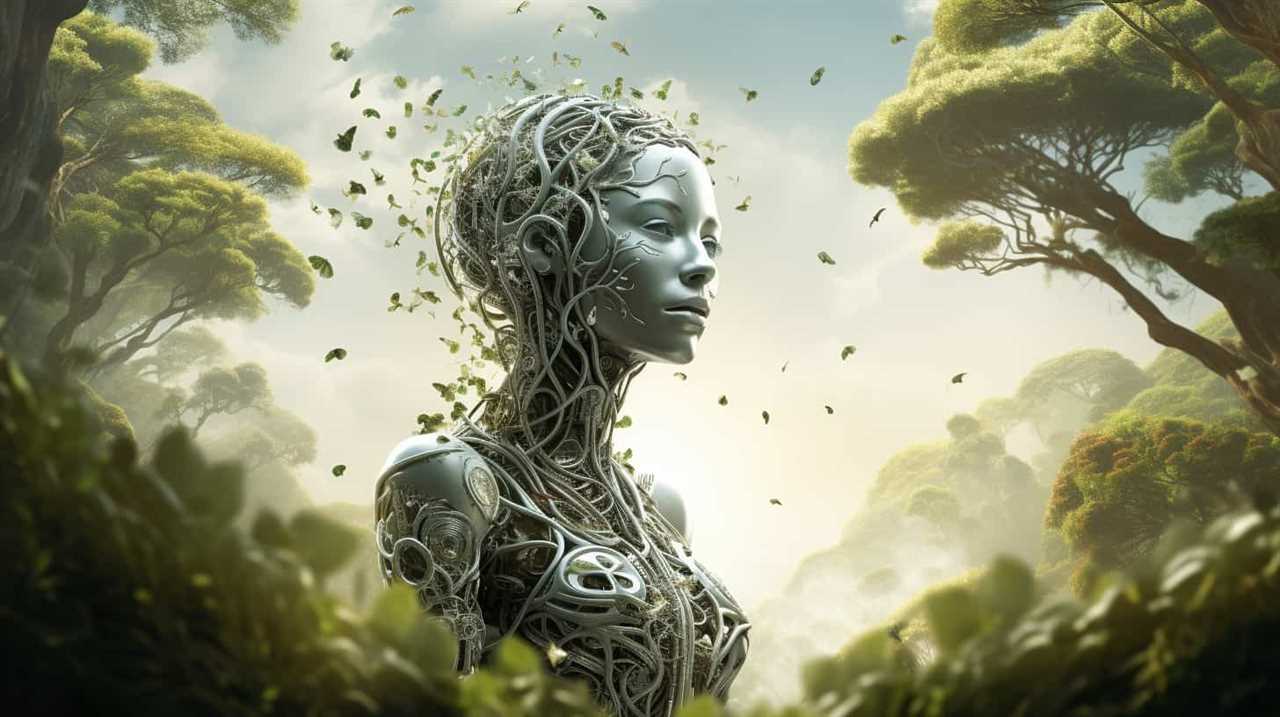
Expanding Augmented Reality Possibilities
With the use of generative AI, we can explore new frontiers in artistic applications by expanding the possibilities of augmented reality. Augmented reality advancements have revolutionized the way we experience art, allowing for immersive and interactive art installations like never before.
Here are five ways generative AI is transforming augmented reality:
- Real-time generative content: AI algorithms can generate dynamic and interactive content in real-time, enhancing the user’s experience and making the art installation more engaging.
- Personalized experiences: Generative AI can analyze user data and preferences to create customized augmented reality experiences, tailoring the artwork to each individual.
- Spatial mapping: By utilizing AI, augmented reality can accurately map the physical environment and seamlessly integrate virtual elements into the real world.
- Interactive storytelling: Generative AI enables artists to create interactive narratives within augmented reality, allowing users to be active participants in the storytelling process.
- Collaborative art experiences: With generative AI, multiple users can interact and collaborate simultaneously within the augmented reality space, fostering a sense of community and collective creativity.
These advancements open up endless possibilities for artists and creators to push the boundaries of augmented reality and create truly transformative art experiences.
Frequently Asked Questions
How Does Generative AI Enhance Visual Effects in Artistic Applications?
Generative AI enhances visual effects in artistic applications by enhancing digital paintings and improving photo editing techniques. It revolutionizes the creative process, allowing artists to create unique and realistic visuals with greater efficiency and innovation.

What Are the Ways Generative AI Revolutionizes Virtual Reality?
Generative AI revolutionizes virtual reality by creating realistic simulations and immersive experiences. It pushes the boundaries of what is possible, allowing us to explore new worlds and engage with art in ways we never thought possible.
How Does Generative AI Transform Motion Graphics?
Generative AI revolutionizes motion graphics by enhancing creativity and efficiency. It enables us to create dynamic and personalized animations, transforming advertising and fashion design. The possibilities are limitless, pushing the boundaries of artistic expression.
What Are the Benefits of Using Generative AI in Game Design?
Using generative AI in game design yields increased creativity and dynamic, unique gameplay. It allows for innovative experiences, pushing the boundaries of traditional game development and offering players new and exciting challenges.
How Does Generative AI Expand Augmented Reality Possibilities?
Generative AI expands augmented reality possibilities by revolutionizing fashion design and architectural visualization. It pushes the boundaries of creativity, allowing us to generate unique and realistic virtual experiences that blend seamlessly with the physical world.
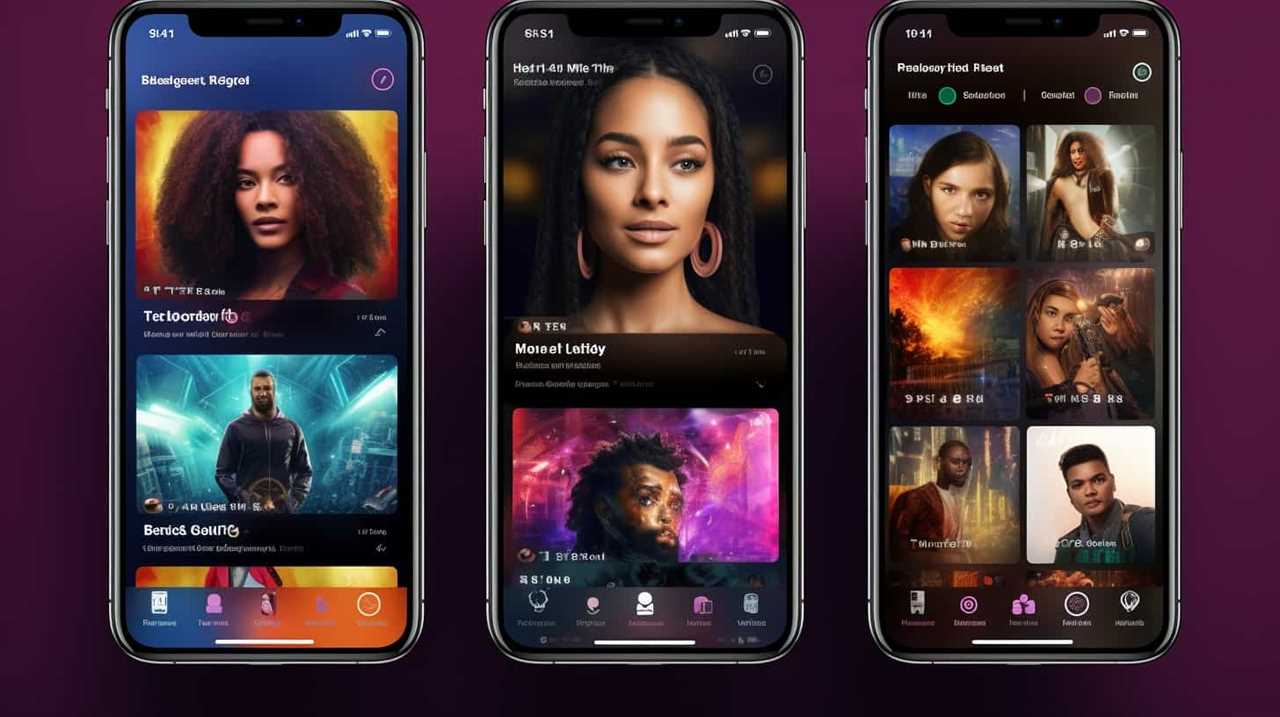
Conclusion
Generative AI has undoubtedly revolutionized artistic applications, pushing the boundaries of creativity and transforming various industries. With its ability to enhance visual effects, redefine character design, and revolutionize virtual reality, this technology has become an invaluable tool for artists and designers.
By automating animation creation, transforming motion graphics, and innovating storytelling techniques, generative AI has opened up endless possibilities for artistic expression. From personalized user interfaces to interactive installations and expanded augmented reality experiences, the impact of generative AI on the art world is truly awe-inspiring.
In an era where technology intersects with every aspect of life, Maxwell bridges the gap between artificial intelligence and journalism. As a writer and AI expert, he explores the implications of emerging technologies on society, economy, and culture. Maxwell’s expertise allows Press Report to offer forward-thinking insights into the future of AI, making complex topics accessible and engaging for our audience.
